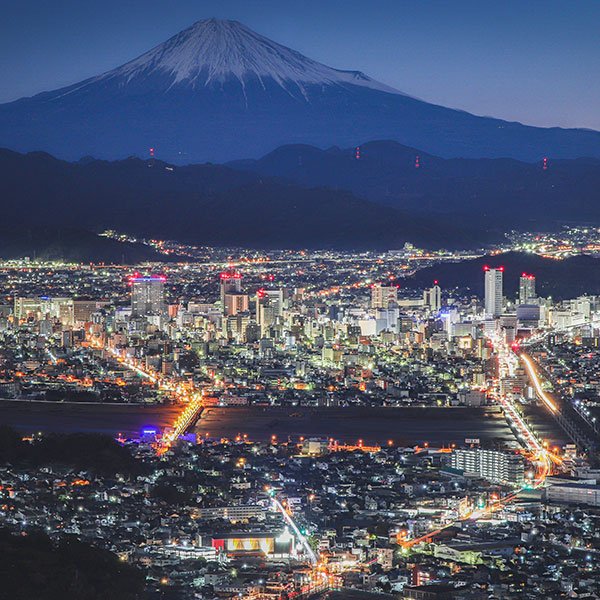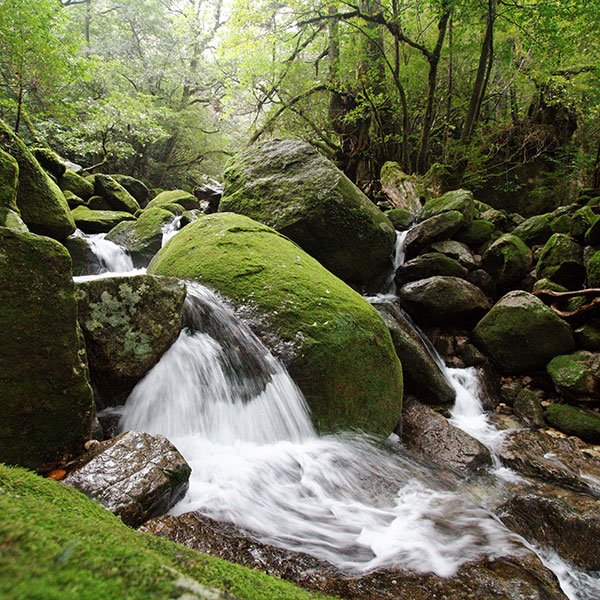Visit Himeji Castle: 8 Things to Know Before You Go
by Teni Wada | TRAVEL
Located in the city of Himeji, in western Hyogo Prefecture, Himeji Castle is one of Japan’s most impressive sights. Historically, Himeji Castle was of strategic importance to the Tokugawa shogunate due to its location along the western approach to the former capital of Kyoto. Today, as one of Japan’s 12 remaining original castles, Himeji Castle holds a special place in the hearts of Japanese residents and visitors.
Read on to learn about the history of Himeji Castle and its role in domestic and international pop culture. As a bonus, we’ve included 3 of the best vantage points in Himeji City of majestic castle, along with a few of our recommended spots in Himeji City.
1. Why is Himeji Castle Famous?
Unlike many of Japan’s other historic landmarks, Himeji, also known as White Heron Castle, has avoided the devastation of war, earthquakes and fire, which makes it one of the country's twelve remaining original castles.
Rich in history and meticulous architectural craftsmanship, the castle is a haven for history buffs and design nerds alike. After recently undergoing extensive renovation over a number of years, the building reopened in 2015 and is looking better than ever. So if you’re passing through the Kansai area, be sure to make a point of popping by this important Japanese icon.
2. How Old is Himeji Castle?
Known colloquially as the White Heron Castle due to the resplendent appearance of its immaculate white walls, Himeji Castle was first constructed in 1333. Since then, it has been rebuilt and remodeled multiple times over the centuries. Its last major overhaul was completed in 1609, resulting in Himeji Castle as we know it today.
The castle is both a national treasure of Japan and a UNESCO World Heritage Site, having the distinction of being the “finest surviving example of early 17th-century Japanese castle architecture.”
However, it is a combination of circumstance and architecture that Himeji Castle escaped both the chaos of revolution and wrath of natural disasters.
© Yoshida Toshi, Himeji Castle, 1951
The Meiji Period (1868-1912) was a transformative era in which the Tokugawa shogunate was replaced with nationalism and imperial ideology. Castles, symbols of the feudal lords and thus physical reminders of Japan’s feudal past, were systematically demolished. Himeji Castle, however, was spared when a local resident purchased the castle at a government auction in order to develop the land on which it stood. Nevertheless, the cost of demolishing the castle proved to be too much for the winning bidder, and Himeji Castle remained untouched until major restoration work was conducted in 1964.
Himeji Castle also survived the firebombing of World War II as well as the Great Hanshin earthquake of 1995. The castle underwent an extensive 5 year restoration project in 2010 and reopened to the public in March 2015.
3. What Does Himeji Castle Look Like?
Situated on a hilltop in Himeji City, in Hyogo Prefecture, the well-preserved complex of Himeji Castle consists of more than 80 buildings spanning over 107 hectares, all connected by multiple gates and a labyrinth of high walled paths.
Embedded into its slanted walls are ishi otoshi mado — angled chutes used to throw stones or boiling liquids on invaders. Its looming towers overlook an elaborate system of more than 1,000 hasama, or multi shaped porthole used to defend the castle with arrows, spears, and firearms.
The castle stands nearly 50 meters tall, or 17 stories high, while its main keep, a wooden structure, stands 6 stories tall. Inside the main keep are amenities rarely seen in other Japanese castles. Among the rarities are a kitchen, lavatories, and drain boards.
In addition, the first floor of the main keep is lined with hundreds of tatami mats, and its walls are lined with weapons racks, with firearms and spears on display today.
© Wei-Te Wong / Creative Commons, Himeji Castle Through the Cherry Trees
Despite its battle-ready fortifications, Himeji Castle was never besieged. Its relatively peaceful history and architectural beauty is reflected in its modern-day status as one of Japan’s most popular cherry blossom viewing spots.
Another notable feature of Himeji Castle is Kokoen, a 3.5 hectare garden located on the daimyo’s west residence. Opened in 1992, Kokoen consists of 9 separate walled gardens designed in various Edo Period styles.
The largest of the 9 is the daimyo’s garden, which boasts a carp pond with a waterfall. There are also 2 teahouse gardens where visitors can partake in an authentic Japanese tea ceremony.
4. Himeji Castle in Pop Culture
© Tokuriki Tomikichiro, Himeji Castle, 1950s
As the only castle in Japan to hold the distinction of being both a designated national treasure and a UNESCO World Heritage Site, Himeji Castle has been featured heavily in Japanese and international popular culture.
According to legend, Himeji Castle is the birthplace of two different yokai, mysterious entities with supernatural abilities.
Osakabehime is an alluring shape-shifting fox responsible for the death of daimyo Terumasa Ikeda. Her story is the basis of a kabuki play which has been regarded as one of the best in production.
You Only Live Twice (1967)
It is said that the ghost story, Banshu Sarayashiki, features a well that is located on the grounds of Himeji Castle. In one version of this story, a servant named Okiku is framed for theft, then beaten and drowned in a well after repeatedly rejecting her master’s advances.
As for modern, pop culture, Himeji Castle served as the backdrop for James Clavell’s Shogun miniseries, the Akira Kurosawa films, Ran and Kagemusha, and most notably, the James Bond film, You Only Live Twice.
5. Where are the Best Places to See Himeji Castle
The main keep of Himeji Castle dominates the skyline of Himeji City. It’s an impressive sight that fuses both historic and modern Japan. Here are the 3 best spots in Himeji City to see Himeji Castle:
1. Otemae Street
Otemae Street is a 1 kilometer long promenade that connects Himeji Station to the castle grounds. It’s a 15-20 minute stroll that allows you to observe a lively slice of local life.
2. Himeji Gokoku Shrine
Explore the castle grounds and you’ll find this picturesque spot en route to Himeji Gokoku Shrine and Himeji Zoo. You’ll discover a quaint vermillion bridge which contrasts beautifully with the white of Himeji Castle.
3. Hyogo Prefecture Museum of History
Designed by renowned architect Kenzo Tange, the Hyogo Prefectural Museum of History is a reflection of the prefecture’s past — literally! The museum is positioned so that visitors are welcomed with a sight of Himeji Castle reflected on the glass panels.
6. What are the other Best Places to Visit in Himeji?
© Steve Brown / Creative Commons, City of Himeji from Himeji Castle
1. Nadagiku Sake Brewery
Established in 1910, Nadagiku Sake Brewery is a large complex covering nearly 9,000 square meters. Its award-winning sake is brewed using rice grown in Hyogo Prefecture. Time your visit during brewing season (January to March) and join a premium tour of its Kozo brewery.
2. Hamamoto Coffee
Go to Himeji City for the history, and end your visit with a relaxing cup of siphon-brewed coffee at Hamamoto Coffee. In operation since 1975, this a Japanese style coffee shop is frequented by both locals and visitors, with its almost toast being one of its most popular menu items.
3. Tamagoya
Facing the main gate of Himeji Castle is Tamagoya, a family owned restaurant specialising in comforting dishes which use fresh locally farmed eggs. Try the tamago kake gohan, a warm bowl of rice served with a raw egg, and topped with green onions and soy sauce.
7. Himeji Castle: What to Know Before You Go
© Brent Miller / Creative Commons, Himeji Castle Defenses
An admission ticket to Himeji Castle is ¥1,000 for adults and ¥300 for students (elementary, junior high, and senior high school). A combined ticket for Himeji Castle and Kokoen Garden is ¥1,050 for adults and ¥360 for students.
Himeji Castle is a popular destination for domestic and international visitors, especially during cherry blossom season and Golden Week. Be sure to book your tickets in advance before you go!
Alternatively, use the traffic forecast calendar and real-time estimate of the number of visitors located on the official Himeji Castle website.
Address: 68 Honmachi, Himeji, Hyogo Prefecture, 670-0012
8. How To Get to Himeji Castle
© Wei-Te Wong / Creative Commons, Road to Himeji Castle
Himeji Castle is a 15-minute walk from JR Himeji Station.
Kyoto
From Kyoto Station, take the Tokaido-Sanyo Shinkansen, a 45 minute trip.
Osaka
From Osaka Station, take the JR Tokaido-Sanyo Line, a 60 minute trip.
Tokyo
From Tokyo Station, take the Tokaido-Sanyo Shinkansen, a 3 hour trip.













TRAVEL | April 26, 2024